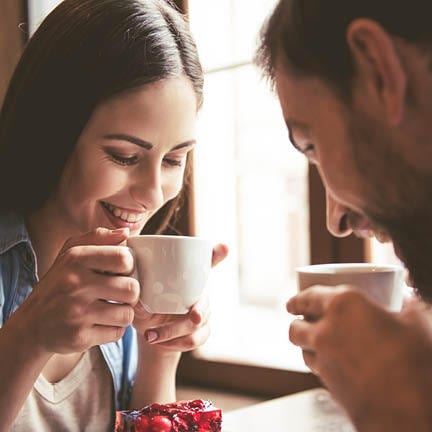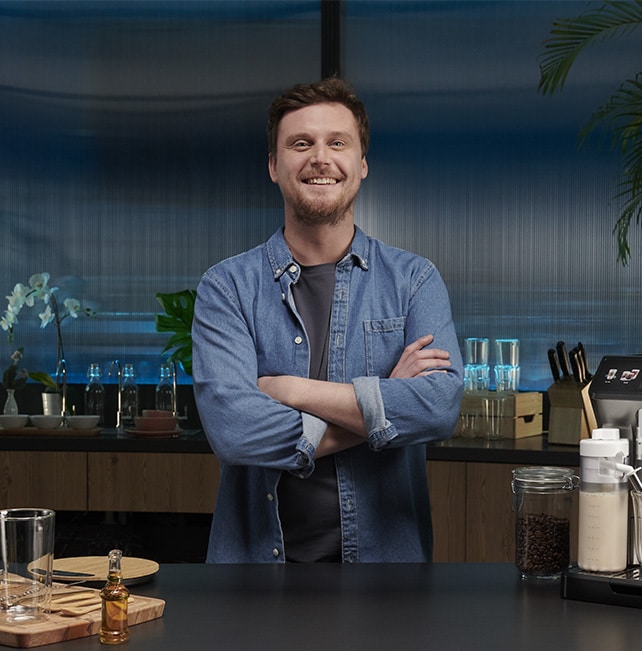- Beans & Roasters
- Sydney Coffee Lounge
The best coffee experience starts here
- Education
The best coffee experience starts here
- Magazine
- Recipes
- About us
The best coffee experience starts here
The best coffee experience starts here

Trends & Lifestyle
Whoa brew! With so many coffee beans to choose from, how do you know where to begin? First of all, cool beans! This is a great problem to have, right? There are plenty of fishes in the sea of specialty coffee.
But don’t fear if you’re overwhelmed, we’re here to help you on the journey, with some tips to navigate the coffee dating pool, and send you on your way to the perfect batch, or rather, batches. Because, seriously brew, the coffee scene is not monogamous.
Keep it fresh
No one wants to go on a date with a stale bean. Or in this case, a cherry past its use by. Yes, coffee is in fact a type of cherry and like any fruit, it is best served fresh. Always look for the roasting date on the packaging. Ideally, you want to buy beans as close to their roasting date as possible and avoid anything after 3 weeks. While coffee won’t go ‘off’ per se it will lose its fun.
Grind it at home
There are two ways to ensure freshness – one is the roast date, the other is the grinding. If you have a coffee machine or a grinder at home, then buy your beans whole and grind just before use. If you’re using an espresso machine with an in-built grinder, just put the amount of beans in the bean hopper that you will roughly use in a day.
We don’t advise to buy pre-ground coffee but if you don’t have a grinder at home, have it ground as close to when you’re going to use it as possible and in small portions (as in what you will use over the next few days).
What’s your flavour?
Specialty coffee – like wine, chocolate and cheese – has distinct flavour profiles. These will come from the variety of coffee, where it is grown, and how it is roasted. When selecting your coffee, start with flavours that you tend to enjoy in foods. For example, you may have a penchant for nutty, dark chocolatey flavours. Or maybe you love fruits and spices.
Look for flavour descriptions on the packaging that appeal to you. And hey, dating is about exploring – it’s definitely worth trying all kinds of flavours! Don’t be shy to ask your local café or barista for advice. Plus, if you like drinking their coffee at the café, you’ll more than likely enjoy it at home.
The right roast
Ready to get roasted? The degree to which beans are roasted (as in the time they spend a-roastin’) enhance different flavour profiles. But we don’t want to get too technical. Think of a roast in cooking terms – light (rare), medium (medium) and dark (well done).
A light roast will stay close to the flavours of its origin. It’s more acidic and often floral or even fruity. Whilst a medium roast is middle of the road, picking up the nuances of the origin but also developing additional flavour in the roasting process from the release of oils. A dark roast is a bit more on the traditional Italian espresso style. This has merits too, but as it is cooked longer it will pick up more of the flavours of the roast itself and develop some bitter notes.
How do you brew?
As in, do you use an espresso machine or are you using a filter or stovetop method? This also ties in with the roast.
Specialty beans are roasted to either an espresso or filter setting. Make sure you choose the right one to suit your brewing method – this will be on the packaging or in the website information.
Also, a light roast is recommended for filter coffee, medium is generally best for an espresso machine, while a dark roast can blend beautifully with milk-heavy coffee such as an iced coffee.
Single origin or blended?
Similar to wine, you can drink coffee that comes from one single geographical location – one estate – or you may choose a blend where the roaster has combined two or more estate coffees to create certain flavours.
A very basic tip would be that if you’re drinking black coffee, single origin is often the way to go. Whereas if you love a milk-based coffee, a blend is probably more suitable. But there are no hard and fast rules in this – we recommend trying both!
Bean there, dig that
Coffee has so many varieties. And as you explore, you’ll start to associate certain flavour profiles with certain regions or countries. All kinds of factors affect the profiles of coffees such as their geographical climates, altitude, and soil.
We didn’t put too much focus on bean varieties in this guide as we didn’t want you going into the coffee dating scene with information overload! Our advice is to try and learn as you go. Travel to as many countries as you can because it’s a wide world of flavour and your tastes are going to keep on changing.
As a very simplistic guide:
Anyway, we hope you enjoy your coffee dating adventures. Go far, travel wide, and enjoy, brew!


Testo vario
Join us
Policies
Support

